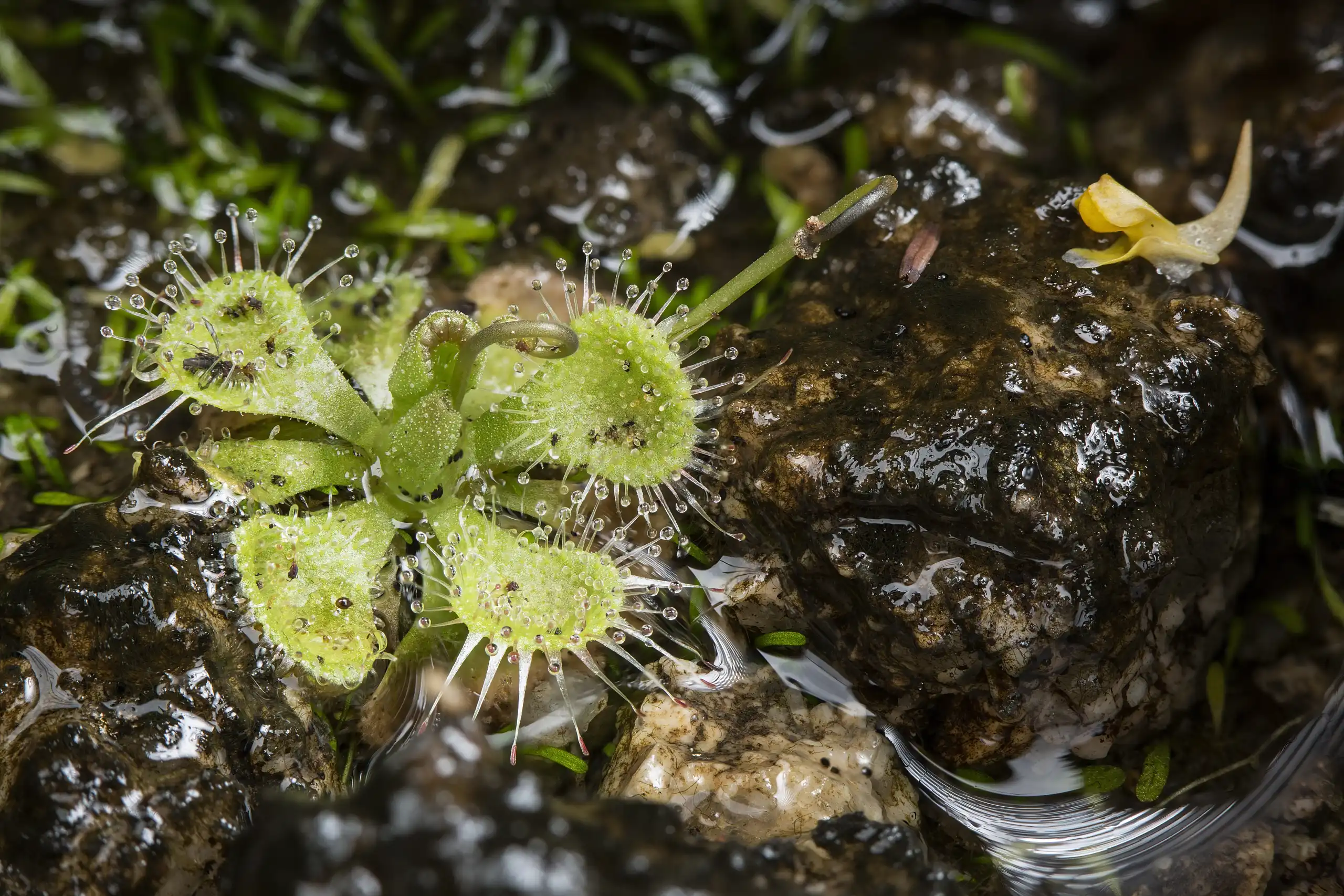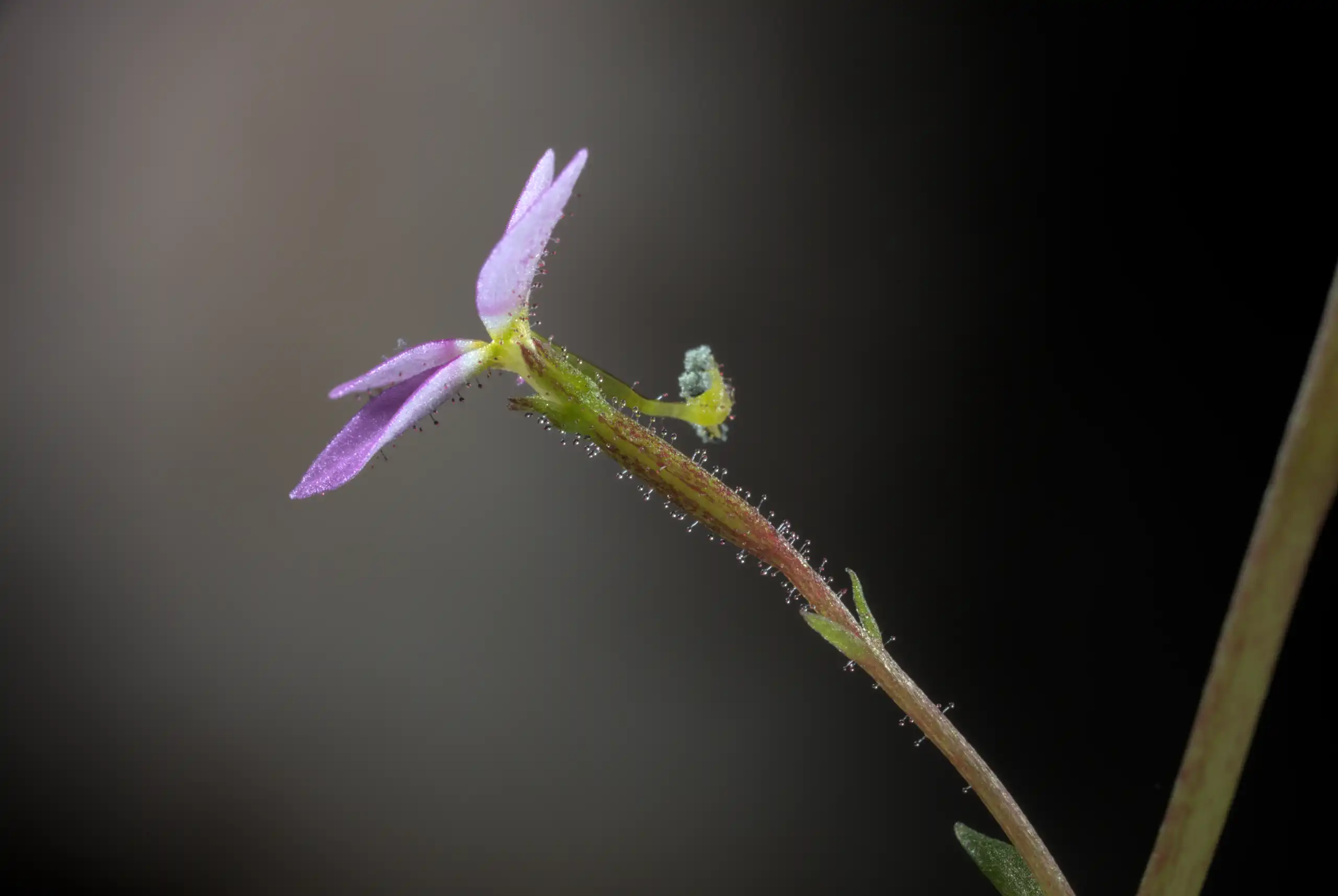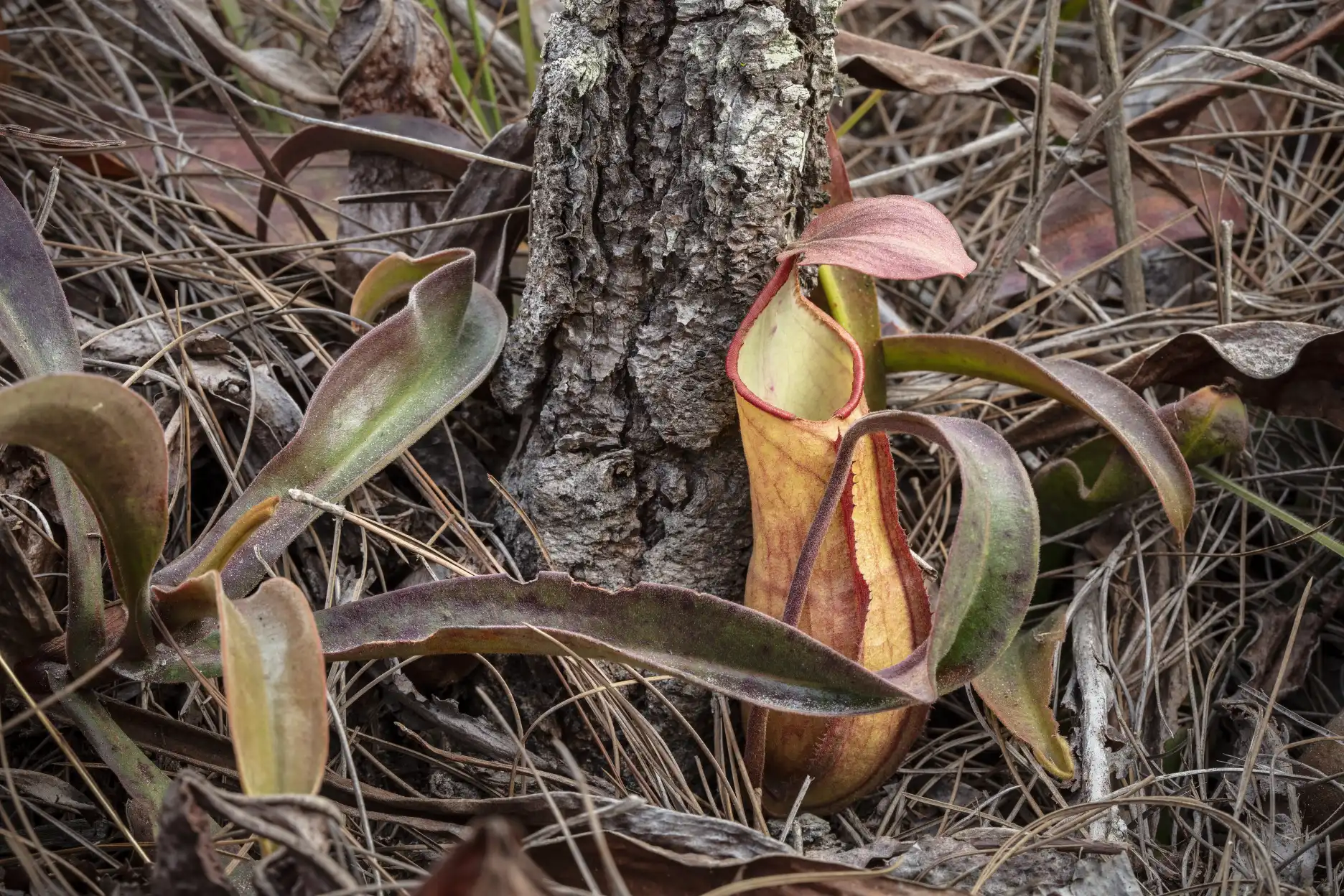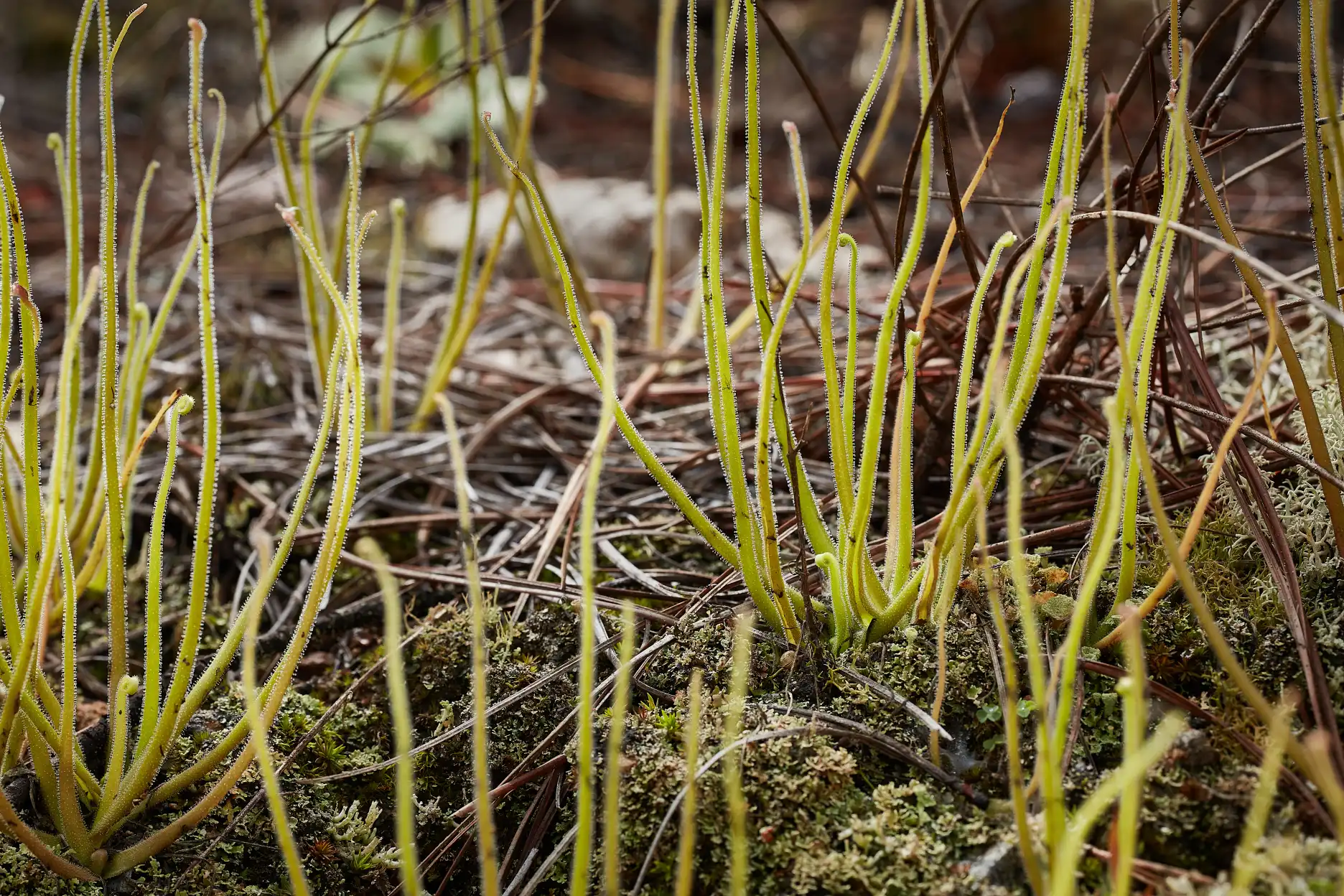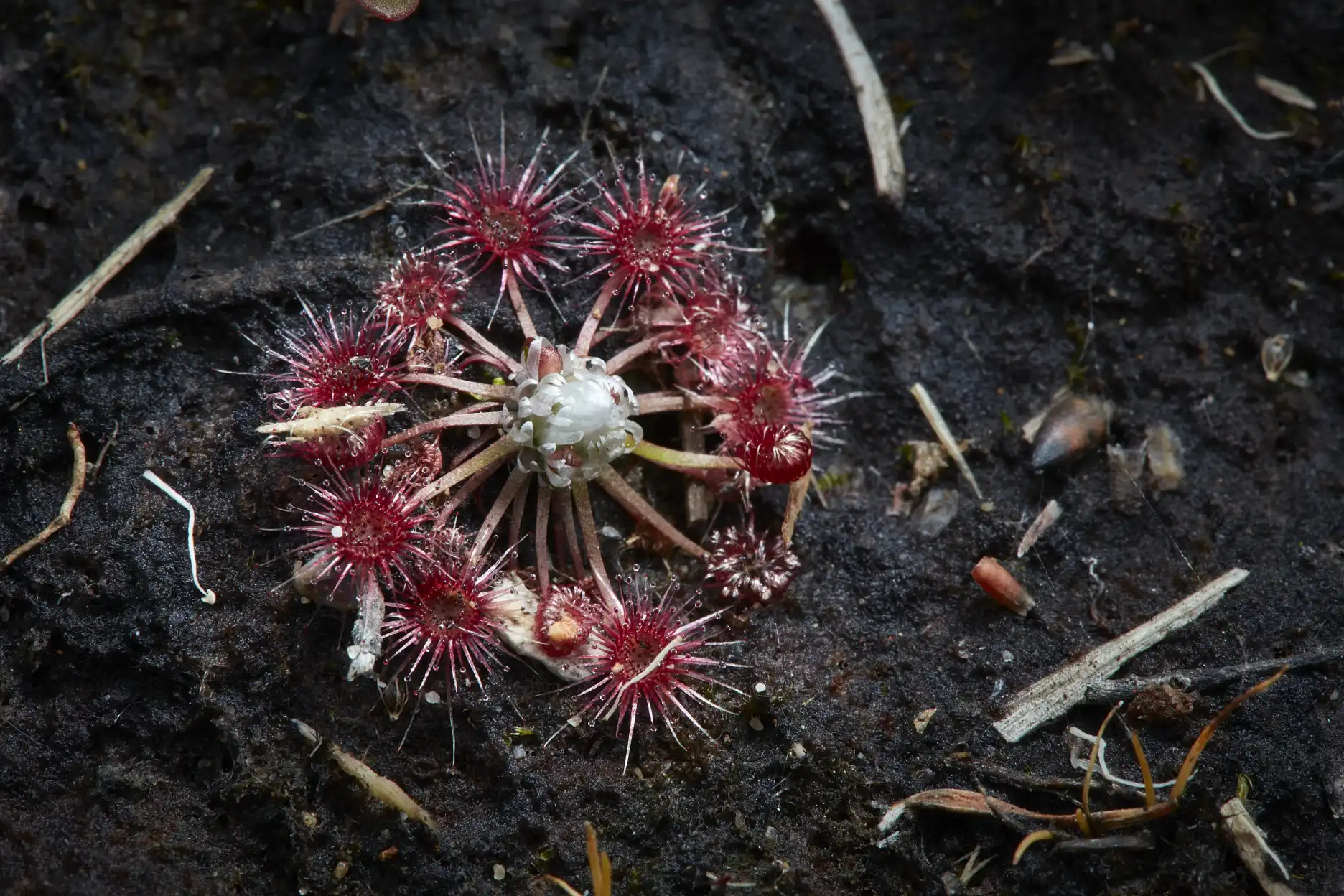Drosera burmannii in Zhuhai, China
Although not known for carnivorous plants, south China hosts a substantial diversity in relevant species. Multiple Drosera and various Utricularia. Nepenthes too, which we will disregard; who wants to hear about Nepenthes, after all?
Even though I spent over a decade living in south China, I did more botanizing in Thailand during that time than in Mainland China. These images are among of the last plant pictures I made there, fully five years before departing the country.
How could one possibly neglect such fertile ground for exploration, you may ask? Take a look at the pin on the map above, the location for these Drosera burmannii and Utricularia bifida. Most of the development currently present on the map did not exist in 2014 but one thing that was present on Hengqin Island was that unmarked compound due west of the Drosera. That is apparently a military compound of some variety. I know this because a platoon from said compound ended up intercepting my departure from the hillside. Their leader was keenly interested in my activities and in delivering my passport to headquarters for further inspection.
While the episode was no more than a disquieting inconvenience, it was also not the first time that I had been detained while photographing things I found interesting in China. Non-Chinese people are supposed to visit factories, hotels, and major tourist sites; those aberrant foreigners discovered in less popular spots are automatically assumed to be spies or, worse, journalists, particularly when they carry tripods and conspicuous cameras.
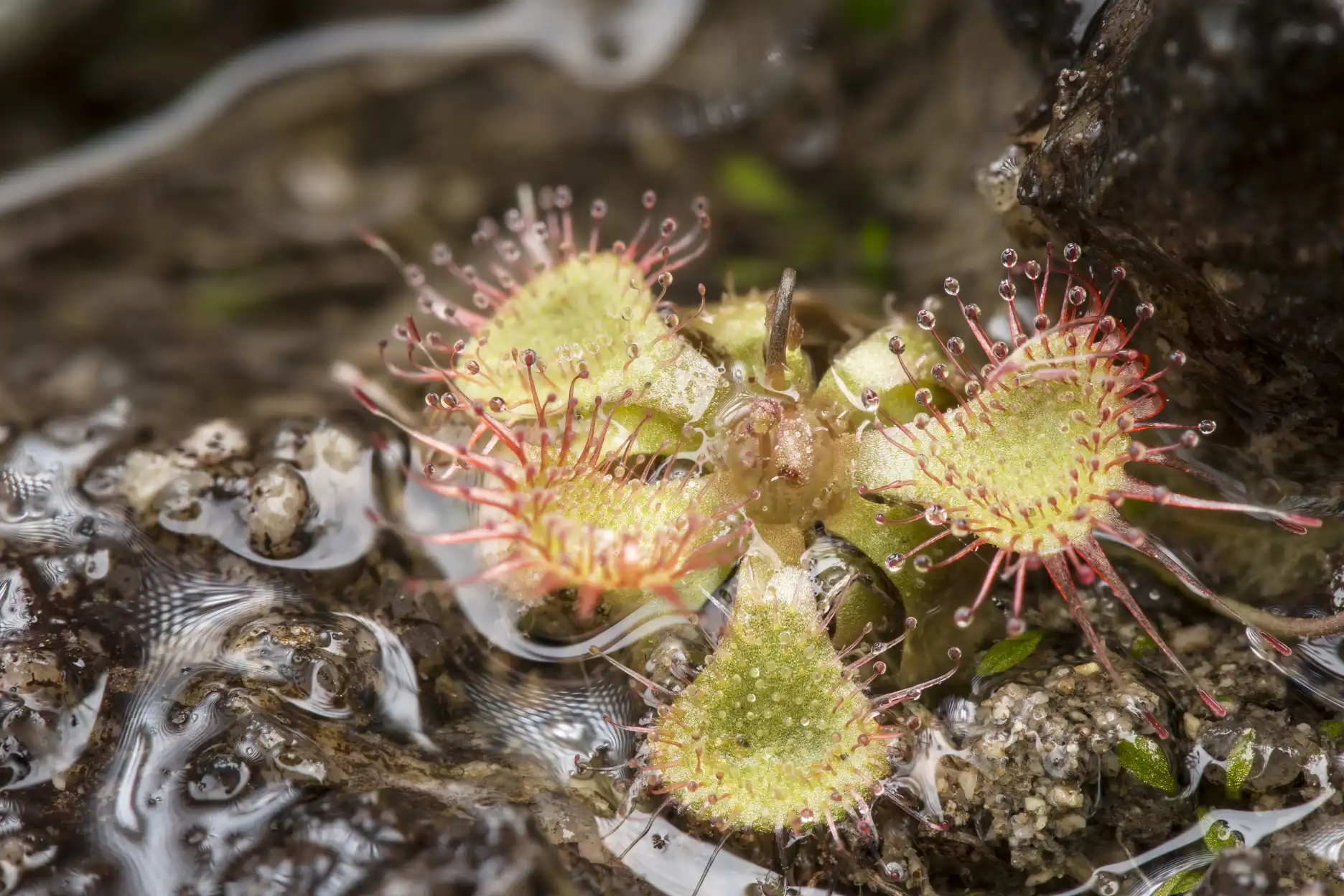
Anyway, these Drosera burmannii were growing on a steep, rocky hillside with an abundance of seeps. Nepenthes mirabilis were also present elsewhere on the hillside, along with the Utricularia bifida seen in the images. Hengqin Island is extremely close to Coloane Island in Macau; the Drosera spatulata and Utricularia caerulea found there are, or where, likely present on Hengqin Island too.
I say “were” because Hengqin has undergone an extreme transformation in the past 10 years. It rapidly metamorphosed (or metastasized) from a rural outpost of sleepy fishing villages and farm fields to being enveloped by immense office towers and sprawling apartment complexes. There are probably still some carnivorous plants there, but I wouldn’t count on them sticking around for very long.
